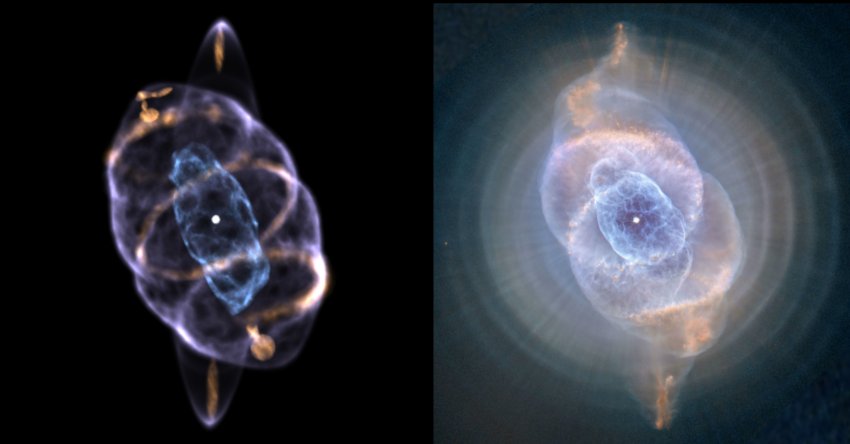Cat’s Eye Nebula seen in 3D
Versão portuguesa disponível aqui
Researchers have created the first computer-generated three-dimensional model of the Cat’s Eye Nebula, revealing a pair of symmetric rings encircling the nebula’s outer shell. The rings’ symmetry suggests they were formed by a precessing jet, providing strong evidence for a binary star at the centre of the nebula. The study was led by Ryan Clairmont, who recently completed secondary school in the United States, and is published in Monthly Notices of the Royal Astronomical Society.

A planetary nebula forms when a dying solar-mass star ejects its outer layer of gas, creating a colourful, shell-like structure distinctive to these objects. The Cat’s Eye Nebula, also known as NGC 6543, is one of the most complex planetary nebulae known. It is just over 3,000 light-years away from Earth, and can be seen in the constellation Draco. The Cat’s Eye Nebula has also been imaged by the Hubble Space Telescope in high resolution, revealing an intricate structure of knots, spherical shells, and arc-like filaments.[…] Read more in the original article: RAS.


Leave a Reply